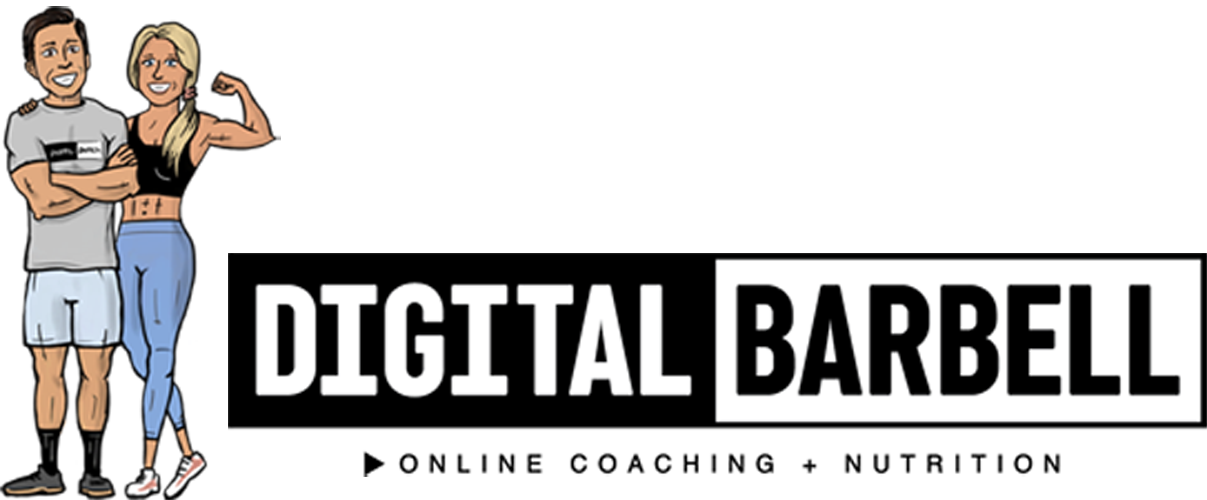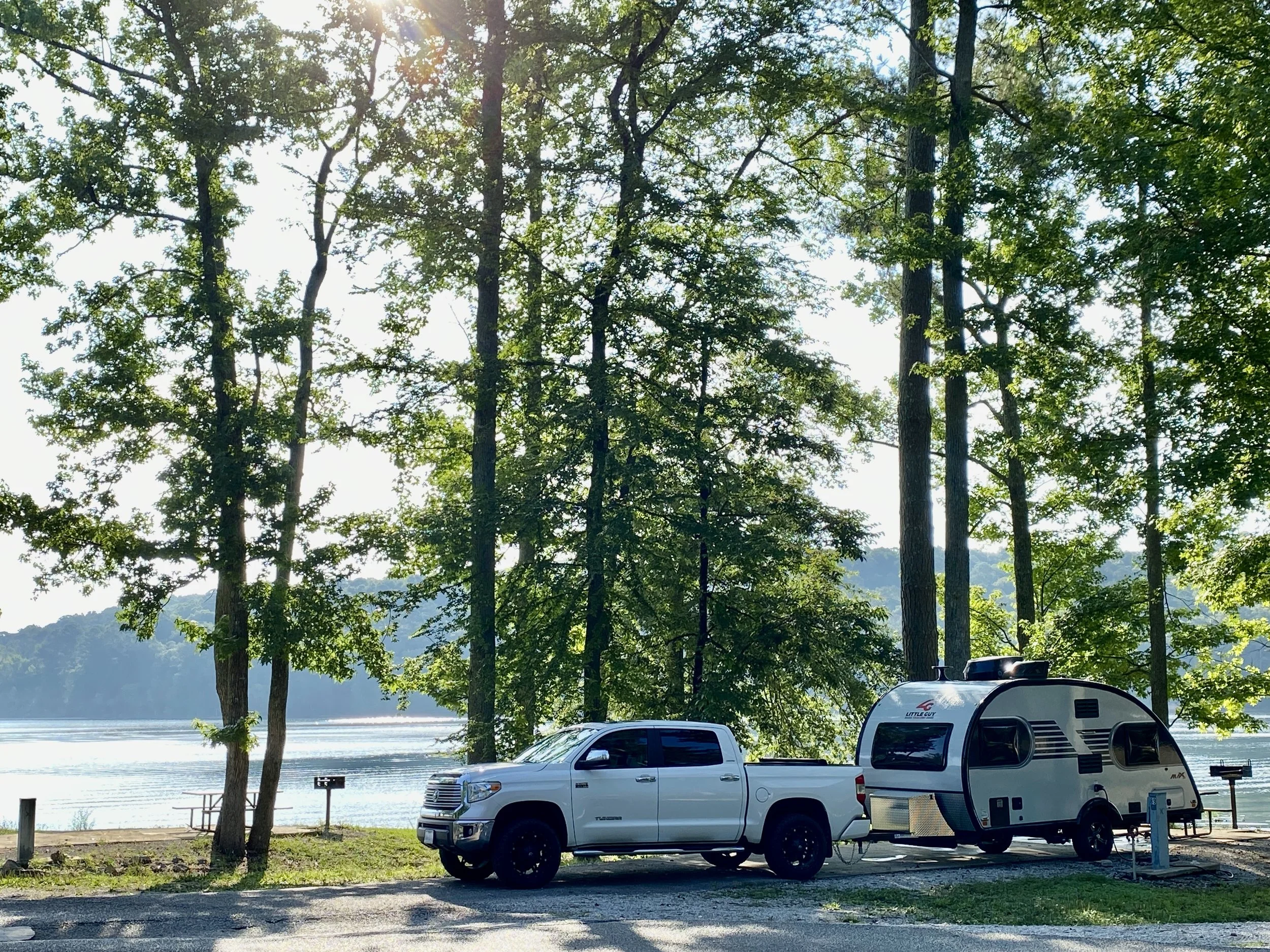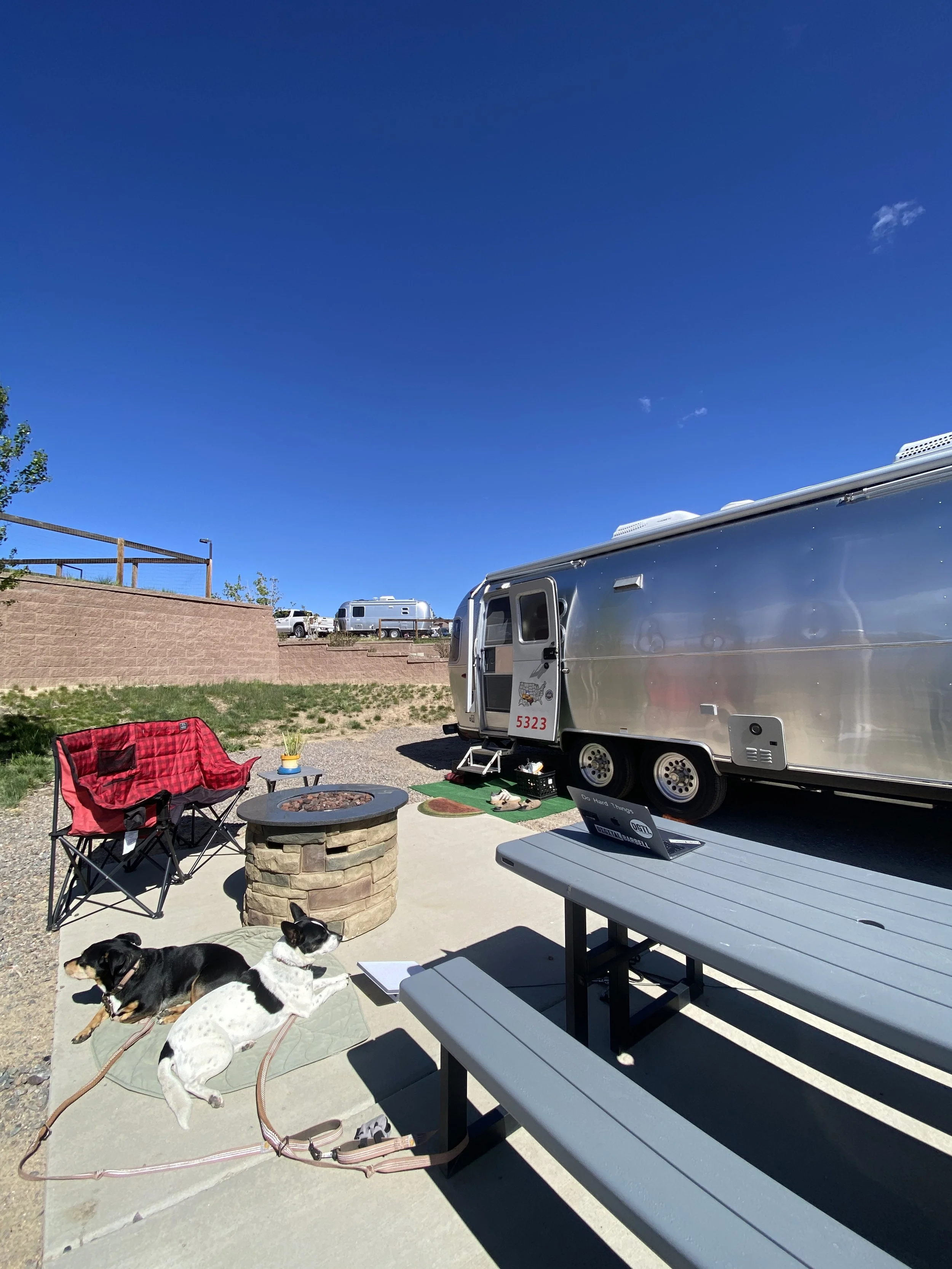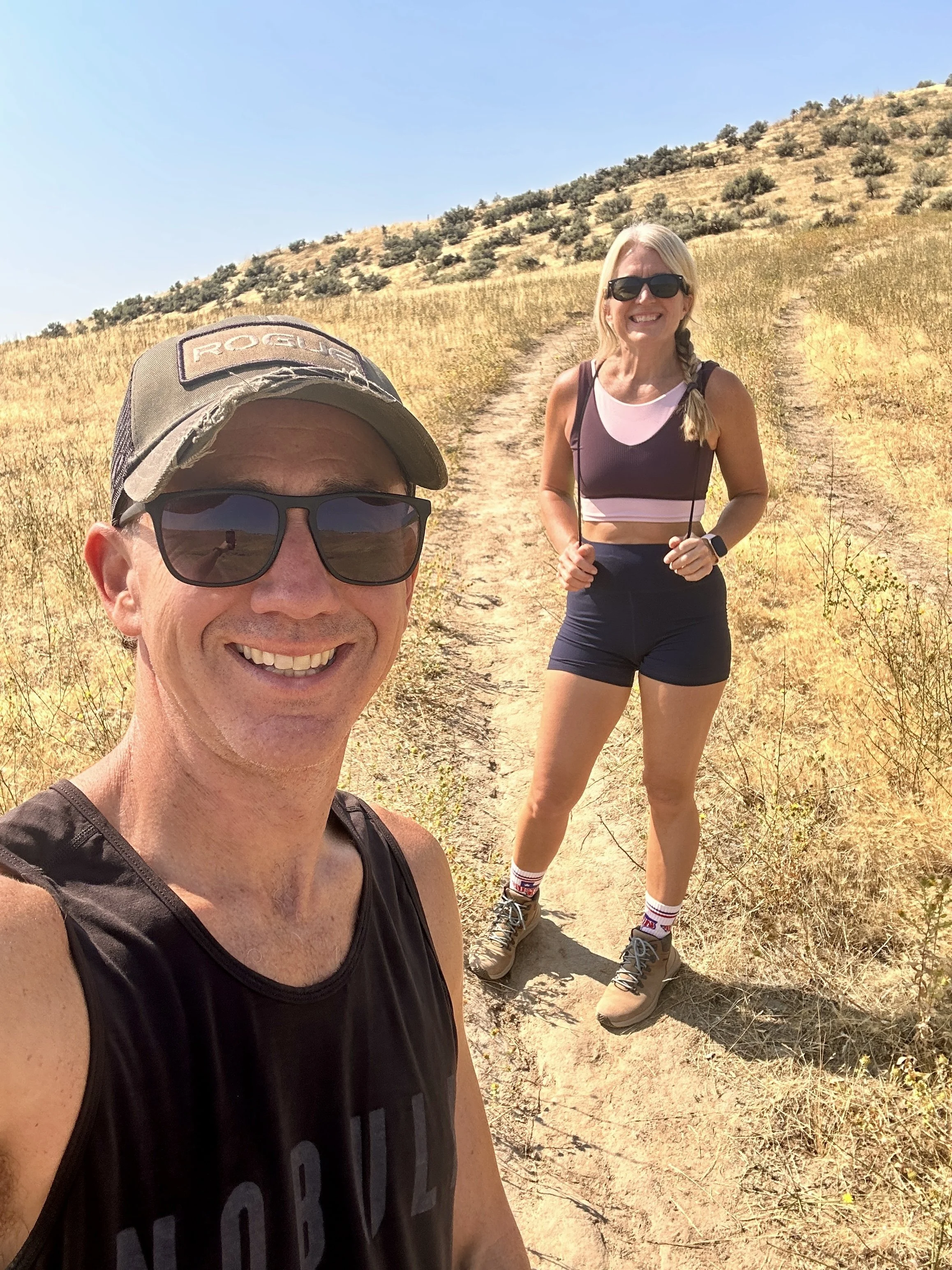How We Get Reliable Internet Living Full-Time in Our RV (and What We Recommend)
If you’re planning to work remotely while traveling or live full-time in your RV, reliable and fast internet isn’t a luxury; it’s your bread and butter!
We’ve been living and traveling full-time in our Airstream for the last 8 months while running our online fitness business, Digital Barbell.
After trying everything from phone hotspots to Starlink, we’ve finally found a setup that keeps us connected anywhere. In this post, we’ll share our four main internet sources, what each one costs, the pros and cons, and what we recommend for anyone considering the digital nomad or RV lifestyle.
P.S. If you’re into health and fitness, check out some of our FREE programs!
Option #1: Using Your Phone as a Hotspot (Simple, But Limited)
When we got our first RV (the little guy) back in 2022, we mostly did weekend trips.
Camping in Mississippi in The Little Guy
For internet, we used our AT&T iPhones as hotspots for our laptops and Apple TV. It worked… until it didn’t. The phones always had to stay plugged in, they overheated if we sat outside to work, and we ran into plenty of dead zones where AT&T’s signal was weak, especially in state parks.
We love working from coffee shops, but when you can’t even check your email or make a call from your camper, that’s no bueno when you’re trying to run a business.
We considered buying an AT&T hotspot device, but between the cost of the hardware, the $80/month plan, and the data caps, it wasn’t worth it.
That said, our phone hotspots are still our go-to backup when we’re at a coffee shop or on a drive day. Even if the shop has free Wi-Fi, we’ll connect through our phones for security and reliability.
We get 60GB of hotspot data included in our phone plan, which runs about $150/month total for both of us. It’s far from perfect, but it’s reliable for short-term use.
Option #2: T-Mobile 5G Home Internet (Our Go-To Setup)
When we decided to move out of our house and go full-time in our Airstream, we needed something faster and more consistent. Enter: T-Mobile 5G Home Internet.
Here’s the secret, so lean in… It’s technically meant for “home” use, but as of now, you can bring the modem on the road.
We swapped the T-Mobile SIM card into a 4/5G modem with external antenna ports (just in case we needed more reach) and tweaked a few settings with Google’s help. Turns out, we didn’t even need an external antenna. The signal has been rock-solid pretty much everywhere we’ve been.
Our 5G Modem In Action
We routinely see speeds of 150+ Mbps down and 20 Mbps up. We keep the modem/router plugged in inside the cabinet above our desk/dining table. In some campgrounds, the aluminum roof of the Airstream blocks a bit of signal, so we just move the modem outside the cabinet if that’s the case.
It’s also pretty great that we can plug the modem into the 110v plug in our truck for high-speed internet on travel days.
At about $60/month, this is our main internet source about 99% of the time. It’s fast, affordable, and simple.
Option #3: RV Park Wi-Fi (Don’t Count on It)
Honestly? We rarely use RV park Wi-Fi.
Even when it’s advertised as an amenity, it’s usually slow, weak, and totally overloaded at night when everyone’s streaming Netflix. Plus, connecting our Apple TV to it is always a pain.
If we have no other choice, we connect through our Surfshark VPN to keep our and our clients’ data secure, because let’s be honest, RV parks aren’t exactly running enterprise-level security.
The only benefit is that it’s free, and if you’re parked near a signal repeater, you might get decent speeds. But don’t rely on it as your main setup.
RV Park Internet is Hit or Miss
Option #4: Starlink for RVs (The Ultimate Backup)
About two months into full-time Airstream life, we finally hit an internet black hole. No AT&T, no T-Mobile, no Wi-Fi. Totally stranded.
We knew this day would come, so we bit the bullet and bought Starlink.
We went with the Starlink Mini dish, which uses less power and has the router built right in. That means only one cable from the dish to your power source.
We ran the power cord up through the bottom of our Airstream into the bedroom, so we can plug it in next to the bed. The dish stores neatly in its original box, and the extra cord rides in our propane storage up front. This setup lets us put the dish outside, without having the power wire running through a window left cracked open.
The mini dish can run on 12v or 120v power, so it works whether we’re on shore power or running off batteries without an inverter. To use it on 12v, you’ll just need a power cord with an old-school cigarette lighter plug.
We paid $500 for the dish, though Starlink often runs promos closer to $300 now. You win, we lose ;)
If you’re planning to use your internet nationwide, you’ll want the Starlink Roam plan, which lets you use it anywhere you have a clear view of the sky, even while driving with the dish on your dashboard.
We use several terabytes of data each month, so we need the unlimited plan ($165/month). There’s also a 50GB plan for $50/month.
So far, we’ve only had to use Starlink twice in eight months, but it’s been a total lifesaver both times. The best part is, you can pause service anytime and only pay for the months you need it.
Using Starlink in Colorado
What We Recommend for Full-Time RV or Digital Nomad Internet
If you need consistent, high-speed internet on the road, plan on having 2–3 redundant options so you’re never stranded.
Our Internet Setup Recommendation
Primary: T-Mobile 5G Home Internet — $60/month
Every day work and streaming.Backup: Cell Phone Hotspot — $150/month (for both phones)
Perfect for short sessions, coffee shops, or travel days.Emergency: Starlink Roam Plan — $165/month
For remote areas with no cell signal.VPN (Surfshark): For when you’re logged into coffee shop or RV Park WiFi
This combo has kept us online through major cities, state parks, small towns, and long travel days with minimal frustration.
Final Thoughts
If you’re thinking about becoming a digital nomad or living full-time in your RV, don’t wait until you’re parked in the middle of nowhere to think about your internet setup.
Invest in a solid combination of cellular and satellite options now, and you’ll stay connected, productive, and ready to run your business (or binge Netflix) anywhere the road takes you.
Before you go, be sure to follow along with our journey on our YouTube channel.
Have a great day!
Jonathan & Blakley





